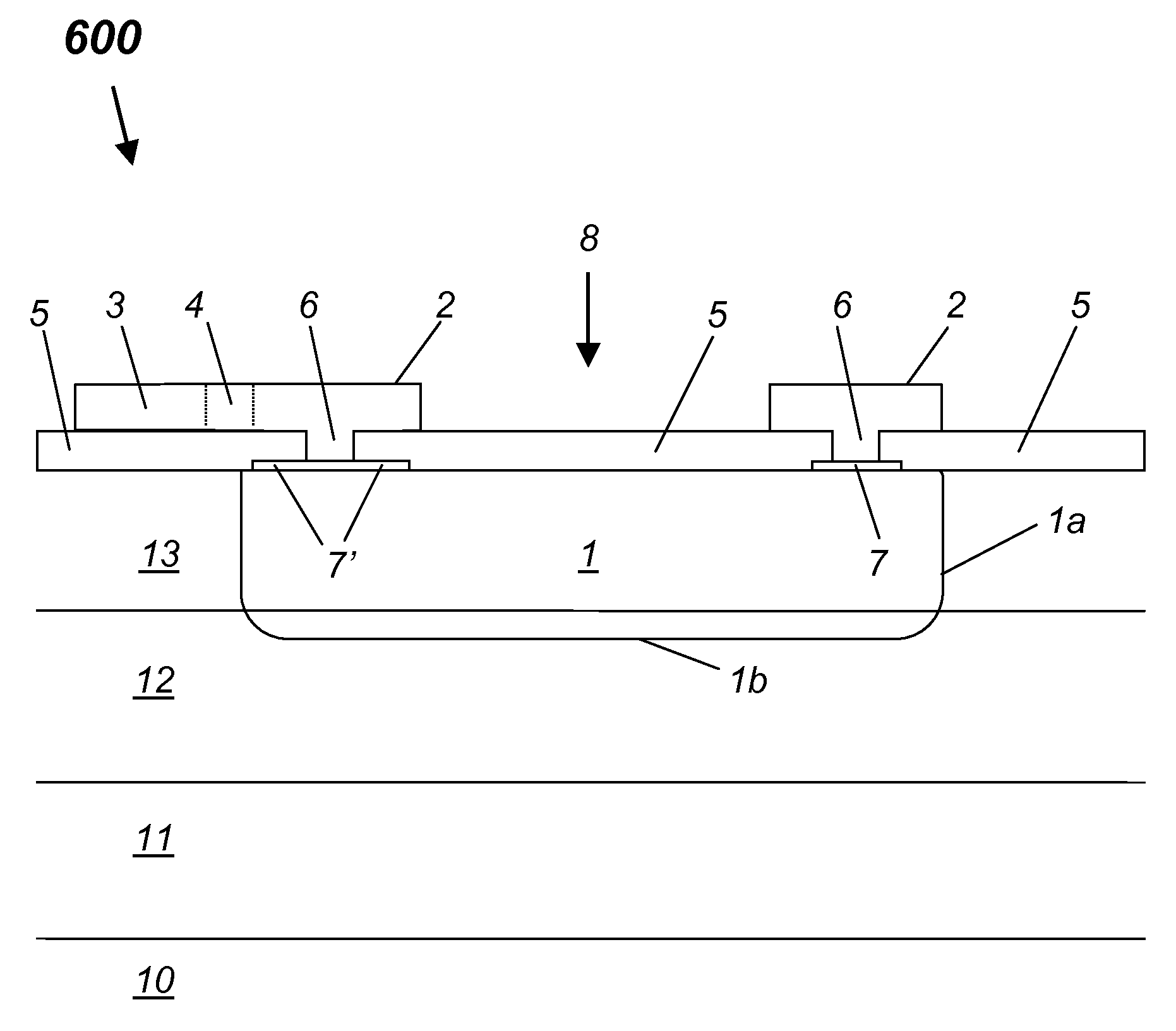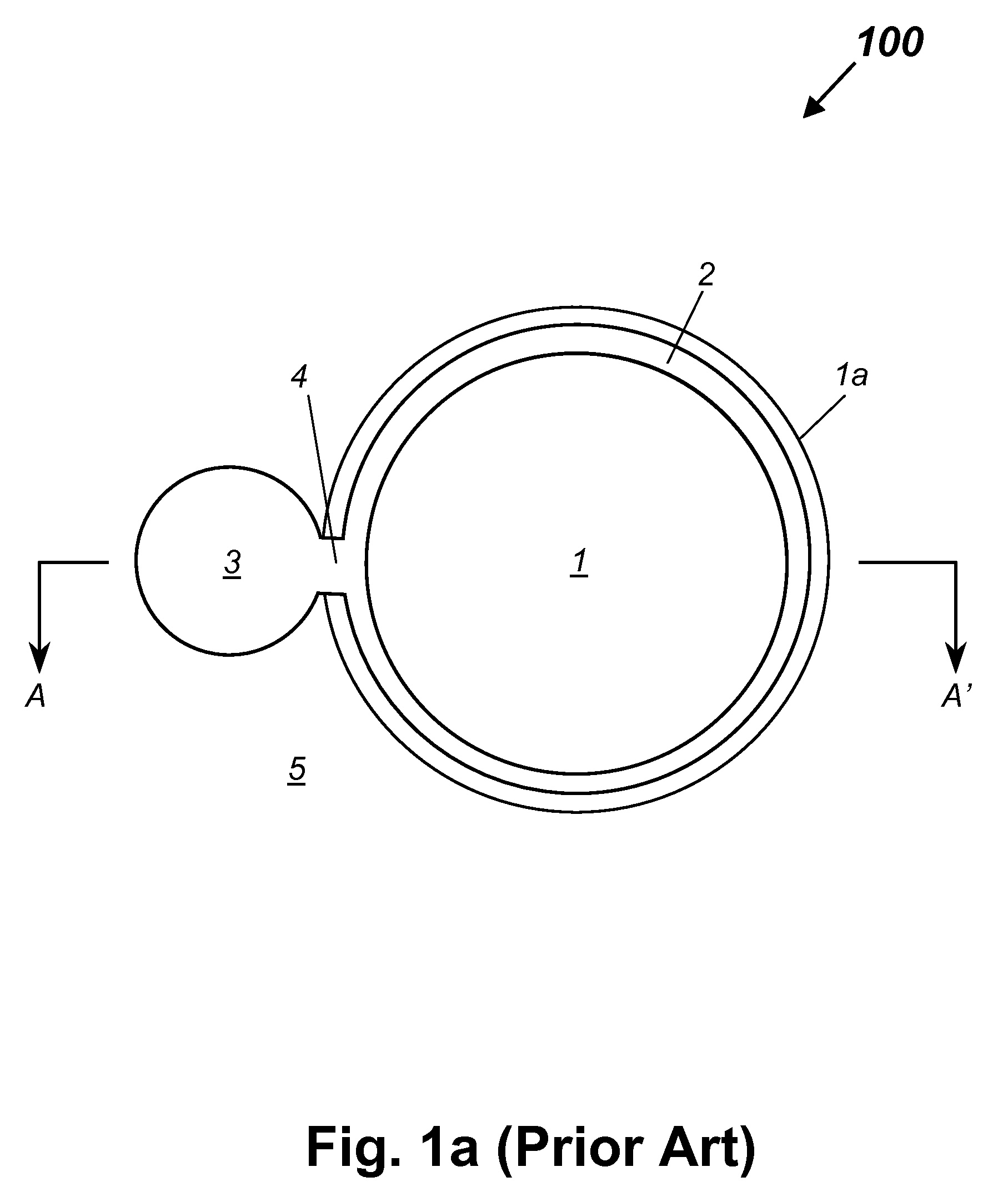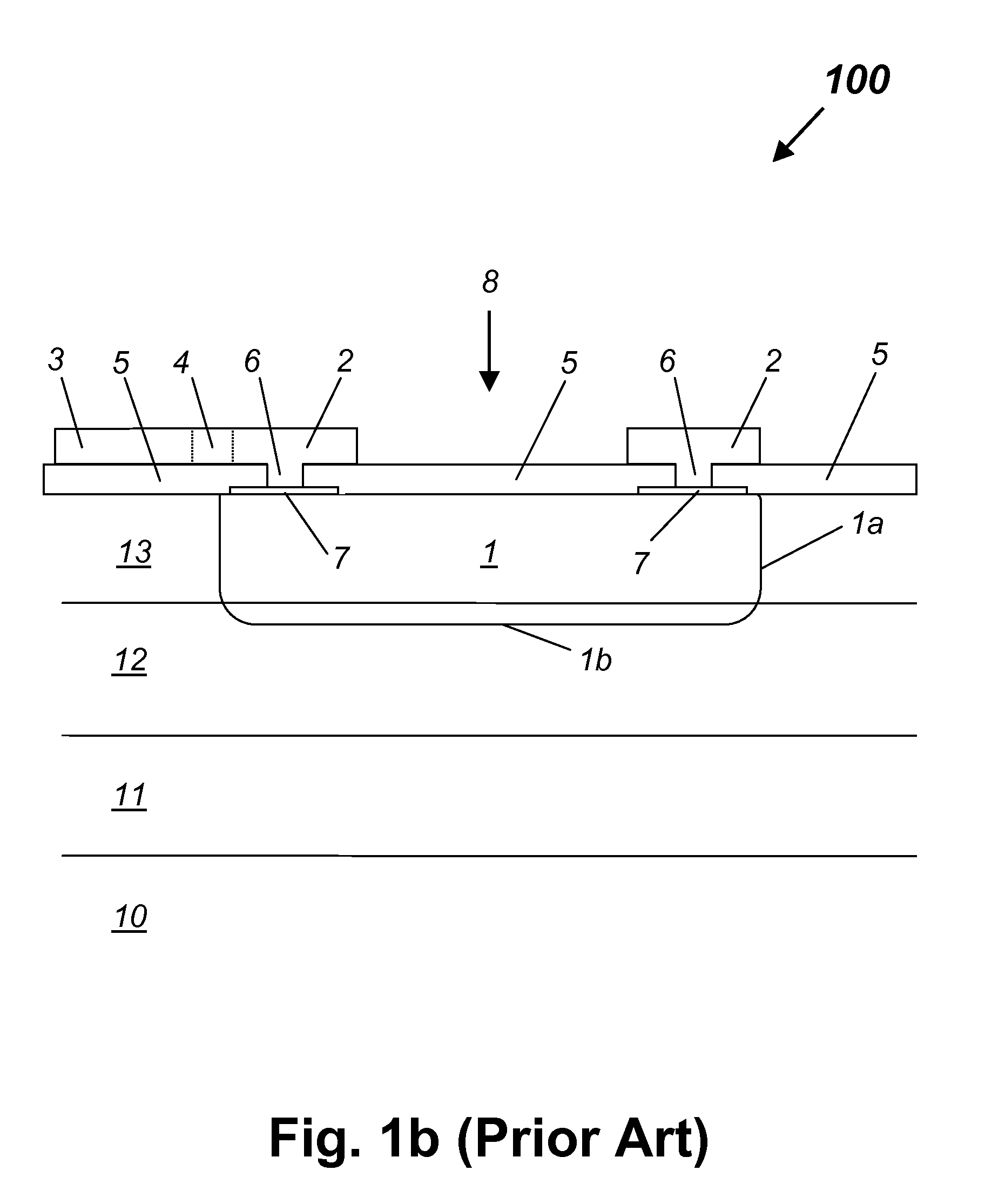Photodiode with high ESD threshold
a photodiode and high esd threshold technology, applied in the field of photodetectors, can solve the problems of low esd threshold, high esd sensitivity, and especially vulnerable to damage from electrostatic discharge, and achieve the effects of low esd-induced current density, low conductivity layer, and low esd sensitivity
- Summary
- Abstract
- Description
- Claims
- Application Information
AI Technical Summary
Benefits of technology
Problems solved by technology
Method used
Image
Examples
first embodiment
[0036]a p-i-n photodiode 200 is shown as a cross-section in FIG. 3a.
[0037]The p-i-n photodiode 200 a substrate 10 supports an n-type layer structure comprising a n-doped buffer layer 11 0.3-1.0 μm thick, an unintentionally doped absorption layer 12 0.8-4 μm thick, and a n-doped or unintentionally doped window layer 13. The window layer 13 may comprise a lowly doped p-type semiconductor layer with a p-doping level less than 1×1017 cm−3. Alternatively, it may comprise a compensated layer with high resistance, such as a grown-in n-type layer with a doping level in the range 1×1017 to 5×1017 cm−3. As the doping of this n-type layer is just slightly lower than the p-doping produced through a p-region diffusion process, it becomes a compensated layer after the p-region diffusion.
[0038]A p-n junction 1b is formed in the absorption layer 12 by a localized p-type dopant diffusion process to form the p-region 1 with periphery 1a. Typically zinc (Zn) is used as the p-type dopant for diffusion...
second embodiment
[0050]In a second embodiment, the photodiode 300 in FIG. 3b has the contact ring 2 directly contacting the InP window layer 13 within the p-region 1. For this purpose a gold-zinc (AuZn) layer 16 is substituted for the contact layer 7 of the previous embodiment. While the AuZn layer 16 forms an inferior ohmic contact to the InP window layer 13, it will be sufficiently good for high speed operation of the photodiode.
third embodiment
[0051]In a third embodiment, the photodiode 400 in FIG. 4 the window layer 13 of the previous embodiments is subdivided into a lower window layer 13, a current spreading layer 14 and an upper window layer 15. The lower and upper window layers 13 and 15 are either undoped or slightly n-doped to a level of 1×1016 to 5×1016 cm−3 to reduce a dark current of the photodiode 400.
[0052]In order to promote a lateral spreading of electrical current flowing from the contact ring 2 toward the buffer layer 11, the current spreading layer 14 is doped higher than the lower and upper window layers 13 and 15. For the current spreading layer 14, the doping level should be in the range of 1×1017 to 5×1017 cm−3, while the thickness should be about 0.2 to 0.5 micron.
[0053]To form the p-n junction 1b in the absorption layer 12, the localized p-type dopant diffusion (using, for instance, Zn) extends through the upper window layer 15, the current spreading layer 14 and the lower window layer 13. Within the...
PUM
 Login to View More
Login to View More Abstract
Description
Claims
Application Information
 Login to View More
Login to View More - R&D
- Intellectual Property
- Life Sciences
- Materials
- Tech Scout
- Unparalleled Data Quality
- Higher Quality Content
- 60% Fewer Hallucinations
Browse by: Latest US Patents, China's latest patents, Technical Efficacy Thesaurus, Application Domain, Technology Topic, Popular Technical Reports.
© 2025 PatSnap. All rights reserved.Legal|Privacy policy|Modern Slavery Act Transparency Statement|Sitemap|About US| Contact US: help@patsnap.com



